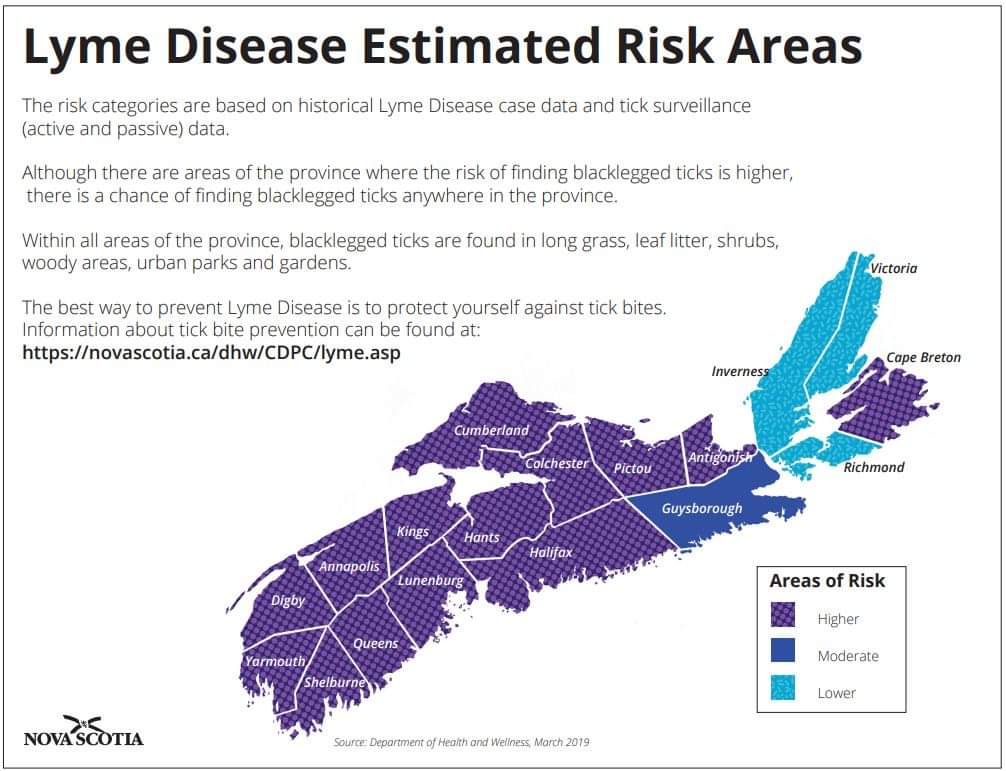**** Info via REMO King’s Cty
Where are the areas of risk for Lyme disease in Nova Scotia?

Nova Scotia has a suitable climate for tick populations. Blacklegged ticks survive best in areas that provide a moist habitat and are often found in and near wooded or forested areas, shrubs, long grass, leaf litter, urban parks and gardens. Adult blacklegged ticks are most active in the spring and fall. They remain active until the temperature is consistently below 4°C. Larvae and nymphs are most active in the spring and summer.
Black legged ticks are found throughout Nova Scotia and all areas of the province are considered as having some risk of Lyme disease. The following is a Lyme disease estimated risk areas map (and table) that uses historical Lyme disease case data and active and passive tick surveillance data to show Lyme disease risk by county.
https://novascotia.ca/dhw/cdpc/lyme.asp



